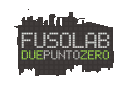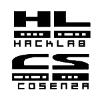FreeRadius Installation
In questa sezione verrà mostrato come installare FreeRadius e tutte le sue componenti su Ubuntu Server 8.04.3. Ovviamente la guida da per scontato che abbiate installato Ubuntu Server 8.04.3.
Installation of base packages
system@meshboard:~$ sudo apt-get install freeradius freeradius-mysql system@meshboard:~$ mysql -u root -p Enter password:<La password di root che avete scelto durante l'installazione di MySQL Server> mysql> CREATE DATABASE radius; mysql> quit system@meshboard:~$ sudo zcat /usr/share/doc/freeradius/example/mysql.sql.gz | mysql -u root -p radius Enter Password : <La password di root che avete scelto durante l'installazione di MySQL Server> system@meshboard:~$ mysql -u root -p Enter password : <La password di root che avete scelto durante l'installazione di MySQL Server> mysql> GRANT ALL PRIVILEGES ON radius.* TO 'radius'@'localhost' IDENTIFIED BY '<scegliere una password per l'account radius>'; mysql> FLUSH PRIVILEGES; mysql> quit
A questo punto avrete Freeradius installato sulla vostra macchina con tanto di database (rlm_sql). Ovviamente per avere Freeradius funzionante in realtime è necessario apportare qualche modifica ai file di configurazione di freeradius istruendolo su come connettersi a mysql.
system@meshboard:~$ sudo vim /etc/freeradius/sql.conf
e cambiare i parametri di connessione al database in accordo con quelli che avete scelto precedentemente:
server = "localhost" login = "radius" password = "<la password che avete scelto per l'account radius>"
Aggiungiamo un NAS di test su localhost
system@meshboard:~$ sudo vim /etc/freeradius/clients.conf
client 127.0.0.1 {
secret = radiussecret
}
Testiamo la configurazione
A questo punto conviene testare la configurazione per verificare che tutto stia funzionando come dovrebbe:
Apriamo il file di configurazione degli utenti (non realtime)
system@meshboard:~$ sudo vim /etc/freeradius/users
e aggiungiamo un utente di prova decommentando:
"John Doe" Auth-Type := Local, User-Password == "hello"
Reply-Message = "Hello, %u"Verifichiamo che non ci siano errori di battitura nel file di configurazione:
system@meshboard:~$ sudo /etc/init.d/freeradius stop system@meshboard:~$ sudo freeradius -XXX -A
Se l'ultima riga contiene qualcosa di simile, vuol dire che tutto è andato a buon fine:
Gio Gen 28 12:34:35 2010 : Info: Ready to process requests.
A questo punto rifacciamo partire il servizio freeradius e testiamo una richiesta di login in locale
system@meshboard:~$ sudo /etc/init.d/freeradius start system@meshboard:~$ sudo radtest "John Doe" hello 127.0.0.1 0 radiussecret
Se non ci sono stati problemi dovreste leggere una roba del genere:
Sending Access-Request of id 136 to 127.0.0.1 port 1812
User-Name = "John Doe"
User-Password = "hello"
NAS-IP-Address = 255.255.255.255
NAS-Port = 0
rad_recv: Access-Accept packet from host 127.0.0.1:1812, id=136, length=37
Reply-Message = "Hello, John Doe"







